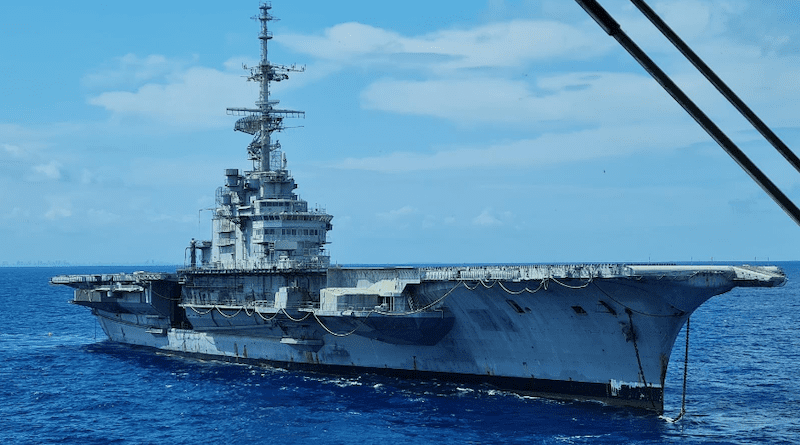Brazil: Toxic Aircraft Carrier Dangerously Drifting After Weeks At Sea
Three weeks have passed since the toxic aircraft carrier São Paulo came back to Brazil after Turkey blocked its import and the Brazilian Environmental Agency IBAMA required its return. Yet, the vessel is still drifting more than 12 miles off the coast of the State of Pernambuco, while both the Brazilian Navy and IBAMA fail to demand and provide a safe haven to prevent potential harm to the marine environment. International and national NGOs[1] are calling for urgent action.
Alarmed by the presence of toxic materials within the structure of the São Paulo, the State Environment Agency (CPRH) of Pernambuco denied the docking of the hull at the Port of Suape, located south of Recife on the southern coast. Several other Brazilian facilities approached by SOK, the vessel’s owner, likewise refused to temporarily host the vessel due to an alleged lack of available berths or technical capacity. NGO observers of this impasse demand responsible action on the part of Brazil as a matter of urgency.
“It is time for Brazilian authorities to stop passing the buck and collectively take responsibility for a dangerous situation. IBAMA is now charged with the environmentally sound management of this ship yet they are again failing to ensure this outcome. Meanwhile, we know the Navy has room for it. It is time to stop playing games,” says Nicola Mulinaris, Senior Communication and Policy Advisor at the NGO Shipbreaking Platform. “The vessel should be required to berth immediately.”
The ship reached its current location on October 5, per instructions by the Directorate of Ports and Coasts of the Brazilian Navy. The latter had ordered for the hull to be inspected in the maritime waiting area by a Salvage Master company, contracted by SOK, in order to verify its integrity. Accordingly, AWS Service performed inspections on October 12 and October 14, and concluded that, due to degradation and structural damage as a result of environmental influences, the “immediate mooring/docking is recommended for structural repair, to avoid the expansion of damage and the possible loss of stability for a long period at sea.”
After the ship is safely moored in Brazil, NGOs call for a complete re-initiation of the plan for the safe recycling or reuse of the ship — one that ensures that human health and the environment are protected as a priority. Considering the illegality of the attempted transboundary movement of hazardous waste to Turkey under a Barcelona Convention protocol, and the buyer’s unreliable Inventory of Hazardous Materials (IHM) submissions, the NGOs are urging Brazil and France (the original naval owner) to start over, perform a new IHM, and initiate a new sale with only legal and capable destinations participating.
“Even if, as recently alleged by the Brazilian Navy, the removal of 55 tons of asbestos took place three decades ago, hundreds of tons of asbestos and other toxic materials are still likely to be onboard the São Paulo,” said Annie Thébaud-Mony of Ban Asbestos France. “Based on the amounts found on the sister ship, the Clemenceau, this ship is expected to contain around 900 tons of hazardous materials, including PCBs and asbestos. The claims that the structures of the São Paulo are contaminated with only 10 tons of asbestos is far from reality.”

